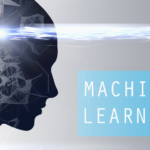Ever found yourself marveling at the rapid advancements of technology in our world today? Just a short while ago, the notion of computers being able to “see” might have sparked disbelief or perhaps a chuckle.
However, fast forward to today and we find ourselves living in a time where this once wild idea has become not only a reality but also an incredibly powerful tool teeming with potential.
Welcome to the realm of Computer Vision (CV) – it’s like giving eyesight to machines via Artificial Intelligence that allows them to perceive and interpret our captivating world just as we do.
Computer Vision employs algorithms that decode visual data from real-life surroundings, whether they’re images or videos—basically making sense out of pictures much like how human vision operates.
Picture this: A machine identifying your unique face amidst millions or pinpointing objects within an image accurately sounds near-miraculous, right? But that’s exactly what CV does!
You might ask why should you even attempt delving into something seemingly convoluted like computer vision? My answer is simple: Gaining knowledge about computer vision uncovers endless prospects for advancement across multiple industries because it brings us closer – one giant leap at a time – towards truly intelligent machines.
Intrigued yet? Let’s journey together into discovering never-ending possibilities borne from Computer Vision!
Key Takeaways
- Computer vision is a field of AI that enables computers to understand and interpret visual data like images and videos. It uses algorithms to make sense of pictures, identifying objects and patterns just like we do.
- Computer vision has evolved over time, starting with simple goals of teaching machines to differentiate light from dark or red from blue. With advancements in technology, it can now detect faces in images and classify different objects accurately.
- The process of computer vision involves acquiring images or videos, processing them by adjusting colors or removing unnecessary parts, converting them into useful data for analysis, and then using deep learning models to find objects and patterns within the images.
- Computer vision has various applications that are transforming industries. For example, self – driving cars use computer vision to navigate roads safely, medical image analysis assists doctors in diagnosing diseases accurately, and security systems rely on facial recognition powered by computer vision for access control purposes.

Understanding Computer Vision
Computer vision is a field of artificial intelligence that focuses on enabling computers to understand and interpret visual data, such as images or videos. This comprehensive guide will provide you with an in-depth understanding of computer vision, from its definition and importance to the history of its development.
Definition and Importance
Computer vision is a part of AI. With it, computers can see and understand pictures like we do. It uses patterns to make sense of what it sees in photos or videos. This way, machines can tell us what is in an image on their own.
Computer vision lets AI take on tasks that need a keen eye. Because we have lots of data and smart ways to use it, computer vision has gotten better and faster at doing its job.
History of Computer Vision
Computer vision was not always like we see it today. In the past, people wished to make machines that could see and understand images. Step by step, they worked hard to create what we now call computer vision.
It all began with simple goals – teaching a machine to know light from dark or red from blue. The evolution of the web flooded us with digital photos and videos. This pushed quick growth in computer vision technology.
Experts invented new ways for computers to understand these images. Today, computers can find faces in an image or tell if a photo is of a cat or dog! For sure, the journey has been long and tough but each bump paved way for more learning and better ideas.
How Computer Vision Works
Computer Vision is the technology that enables computers to understand and analyze visual data, such as images and videos. It involves acquiring the images, processing them using various algorithms, and then extracting meaningful information from them.
By mimicking human vision capabilities, computer vision systems can identify objects, recognize patterns, and make decisions based on what they see. Understanding how computer vision works is essential for unlocking its power in artificial intelligence applications.
Acquiring and Processing Images
Let’s dive into how we get and make sense of pictures in computer vision. First, we capture images or videos. We use tools like cameras or other devices that can record visual data. The better the picture, the easier it is to work with.
- Capture an image or video: This is the first step in computer vision. We need a starting point!
- Check quality: We look at the picture’s detail and clearness. A blurry picture can mess up our work.
- Process the image: Let’s take what we have and get ready to learn from it! This step might include cutting out parts we don’t need, changing colors, or adjusting light levels.
- Get ready for analysis: Now, we turn our image into data. For a computer to see a picture, it needs numbers, not visuals.
- Analyze and understand: Here’s where things get exciting! With deep learning models, our system can find objects and patterns in our picture.
Understanding and Analyzing Images
Understanding and analyzing images is a crucial aspect of computer vision. With the help of artificial intelligence and deep learning techniques, computers can make sense of the visual world. Here are some key points to understand and analyze images:
- Pattern recognition: Computer vision algorithms rely on pattern recognition to identify objects, shapes, and patterns in images. This enables them to understand what they see.
- Feature extraction: Computer vision algorithms extract specific features from images, such as edges, textures, colors, or shapes. These features are used to classify and recognize objects within an image.
- Object detection: Computer vision systems can detect and locate specific objects within an image or video stream. This is achieved by training models with large datasets that contain labeled examples of the objects of interest.
- Image segmentation: Image segmentation involves dividing an image into different regions based on certain criteria, such as color similarity or texture differences. This technique is useful for various applications like medical imaging or object tracking.
- Image classification: Using machine learning techniques, computer vision algorithms can classify images into different categories or classes based on their content. This is done by training models with labeled examples of each class.
- Scene understanding: Computer vision systems aim to understand the context and meaning of a scene by analyzing different elements within it, such as objects, people, or actions taking place.
- Image enhancement: Computer vision algorithms can enhance the quality of images by reducing noise, adjusting brightness levels, or improving contrast. This helps in better analysis and interpretation of visual data.

Applications of Computer Vision
Transforming Industries Through Visual Recognition
Computer vision has revolutionized various industries with its powerful visual recognition capabilities. Let’s explore some of the most impactful applications of computer vision.
Self-Driving Cars: Computer vision plays a crucial role in enabling autonomous vehicles to perceive and understand their surroundings. By analyzing real-time images from cameras, sensors, and lidar systems, self-driving cars can navigate roads, detect obstacles, and make informed decisions for safe driving.
Medical Image Analysis: Computer vision algorithms are transforming healthcare by assisting medical professionals in diagnosing diseases and conditions. From detecting tumors in MRI scans to identifying abnormalities in X-rays, computer vision helps improve accuracy and speed up the diagnosis process.
Security and Surveillance Systems: With sophisticated image analysis techniques, computer vision is enhancing security systems across industries. Facial recognition algorithms enable automated identification of individuals for access control purposes or criminal investigations.
Video surveillance systems also leverage computer vision to detect suspicious activities or objects in real-time.
These are just a few examples of how computer vision is resh
Self-Driving Cars
Self-driving cars are revolutionizing the way we think about transportation. With the power of computer vision and artificial intelligence, these vehicles can navigate without human operators.
They use high-resolution cameras and LiDAR sensors to detect objects and understand their surroundings. This enables them to make decisions in real-time and safely maneuver through traffic.
Self-driving cars have the potential to improve traffic management, reduce congestion, and increase overall transportation efficiency. By leveraging computer vision technologies, autonomous vehicles are paving the way for a future where driving becomes safer and more convenient for all of us.
Medical Image Analysis
Medical image analysis is a fascinating field that combines computer vision and AI techniques to improve healthcare. With the help of AI, medical professionals can enhance the accuracy of diagnosis by automatically recognizing complex patterns in medical images.
Computer vision plays a crucial role in various applications like medical imaging, object recognition, detection, and segmentation. By leveraging deep learning-powered computer vision algorithms, doctors can obtain more accurate and detailed insights from medical images.
This technology has the potential to revolutionize healthcare by enabling early detection of diseases and delivering personalized treatment plans based on individual patient needs.
Security and Surveillance Systems
In security and surveillance systems, computer vision plays a crucial role in detecting and tracking objects, recognizing faces, and even determining emotional states. This technology allows automated systems to interpret images just like humans do.
One of the main applications of computer vision in this field is facial recognition, which has become increasingly prominent. However, it’s important to consider the ethics surrounding the power of computer vision in security and surveillance.
In this article, we will explore various use cases and examples of computer vision in video surveillance and security applications. We will also highlight groundbreaking approaches in computer vision for security purposes, emphasizing the significance of artificial intelligence in surveillance.
The Role of Deep Learning and Computer Vision
Deep learning plays a crucial role in computer vision, revolutionizing the field of visual recognition. Through its advanced neural networks such as Convolutional Neural Networks (CNNs) and Recurrent Neural Networks (RNNs), deep learning algorithms are able to analyze and understand images at an unprecedented level.
With deep learning, computer vision systems can accurately classify objects, detect patterns, and even segment images for further analysis. By leveraging the power of deep learning, computer vision is taking huge strides towards achieving human-level visual understanding, opening up endless possibilities in various industries.
Convolutional Neural Networks
Convolutional Neural Networks (CNNs) are an essential aspect of many computer vision applications. They play a crucial role in image recognition and other tasks that involve processing pixel data.
With CNNs, we can identify, recognize, and classify objects accurately. In fact, CNNs have become dominant in various computer vision tasks and have garnered significant attention.
CNNs are a type of deep learning algorithm that analyzes and learns visual features from large datasets. This enables AI systems to perform complex visual recognition tasks with remarkable accuracy.
By leveraging the power of CNNs, computer vision technology has made tremendous advancements in fields like self-driving cars, medical imaging analysis, security systems, and more.
These neural networks use layers of interconnected nodes or “neurons” to process information hierarchically. Each layer extracts increasingly complex features from the input images before making predictions or classifications.
The ability of CNNs to learn directly from raw pixel data makes them highly effective in handling visual information.
Recurrent Neural Networks
Recurrent Neural Networks (RNNs) are a type of artificial neural network that can analyze and understand sequences of data. They are particularly good at handling time series data or sequences with varying lengths.
RNNs have proven to be useful in various fields, including computer vision, natural language processing, and speech recognition.
In the context of computer vision, RNNs play a crucial role in analyzing visual data such as images and videos. They can be used for tasks like object detection, image segmentation, and visual recognition.
By leveraging the power of deep learning, which is a core technology in artificial intelligence, RNNs enable computers to learn from large amounts of data and make accurate predictions based on that learning.
Deep learning relies on artificial neural networks with representation learning, where the networks automatically extract meaningful features from raw input data. This ability allows RNNs to process complex visual information effectively.
The Difference Between Computer Vision and Image Processing
Computer Vision and Image Processing are two closely related fields, but they have distinct differences. While Image Processing focuses on manipulating and enhancing digital images, Computer Vision goes beyond that by enabling computers to understand and interpret visual data.
Image Processing deals with tasks like noise reduction, image enhancement, and color correction. On the other hand, Computer Vision involves more complex tasks such as object detection, facial recognition, and scene understanding.
Therefore, while both fields work with visual data, Computer Vision aims to extract meaningful information from images for a wide range of applications.
Common Tasks Performed by Computer Vision
Computer vision has a wide range of tasks that it can perform. Here are some common tasks:
- Object Detection: Computer vision can identify and locate objects within an image or video.
- Image Classification: It can classify images into different categories or labels based on their content.
- Facial Recognition: Computer vision algorithms can detect and identify faces in images or videos.
- Image Segmentation: This task involves dividing an image into different regions or segments based on their visual characteristics.
- Optical Character Recognition (OCR): With computer vision, it is possible to extract text from images and convert it into editable format.
- Pose Estimation: Computer vision techniques can estimate the positioning and orientation of objects or people within an image or video.
- Image Restoration: It can enhance the quality of images by reducing noise, removing artifacts, or improving sharpness.
AWS Solutions for Computer Vision Tasks
AWS offers a range of solutions for computer vision tasks. One of the key services is Amazon Rekognition, which is designed to provide image recognition capabilities for applications.
With this service, users can easily integrate AI-powered visual analysis into their own software and systems. AWS also provides API-driven services and customizable deep learning frameworks specifically tailored for computer vision tasks.
These tools allow developers to build and deploy computer vision models with ease. Additionally, AWS Panorama is an AWS service that utilizes computer vision to automate visual inspection processes, enhancing efficiency and accuracy in various industries.
Challenges and Future of Computer Vision
The Challenges and Future of Computer Vision:
As computer vision continues to evolve, there are several challenges that researchers and developers face. One major challenge is the need for large amounts of labeled data to train AI models effectively.
Gathering and curating these datasets can be time-consuming and expensive.
Another challenge is the robustness of computer vision algorithms in real-world scenarios. While AI models may perform well under controlled conditions, they often struggle with variations in lighting, weather conditions, or object occlusion.
Overcoming these challenges requires further research and innovation.
Additionally, ethical considerations surrounding privacy and security come into play when developing computer vision systems. Issues such as facial recognition technology raise concerns about individual rights and potential misuse of personal information.
Looking towards the future, advancements in hardware capabilities like GPUs (graphical processing units) have allowed for more complex deep learning algorithms to be trained efficiently.
This paves the way for improved accuracy and performance in computer vision tasks.
Computer vision also holds great promise in various industries such as healthcare,
Advancements in Technology
Computer vision technology has come a long way, thanks to advancements in artificial intelligence (AI). These advancements have made it possible for computers to interpret images just like humans do.
With the power of AI, computer vision can now process and analyze visual data with great precision and accuracy. This opens up new possibilities for various industries, including healthcare, security, and transportation.
As technology continues to evolve, we can expect further enhancements in computer vision capabilities and solutions that will revolutionize how we interact with visual information.
The Role of CV in Various Industries
CV plays a significant role in various industries, revolutionizing the way tasks are performed. In the field of self-driving cars, CV enables vehicles to identify and understand their surroundings, ensuring safe navigation on the roads.
In medical diagnostics, CV aids doctors in analyzing medical images accurately and swiftly, leading to improved patient care and outcomes. Moreover, CV has proven essential in security and surveillance systems by detecting and recognizing faces, allowing for efficient monitoring and safeguarding of public spaces.
With its ability to extract information from visual data, CV is transforming industries by bringing automation and enhanced decision-making capabilities to machines.
Conclusion
In conclusion, computer vision is a fascinating field that harnesses the power of AI to understand and interpret visual information. It allows machines to analyze images and videos in ways similar to how humans do.
With applications ranging from self-driving cars to medical image analysis, computer vision has the potential to revolutionize various industries. As technology advances and algorithms improve, computer vision will continue to develop and play an integral role in our daily lives.
So, next time you snap a photo or watch a video online, remember the incredible capabilities of computer vision behind it!




